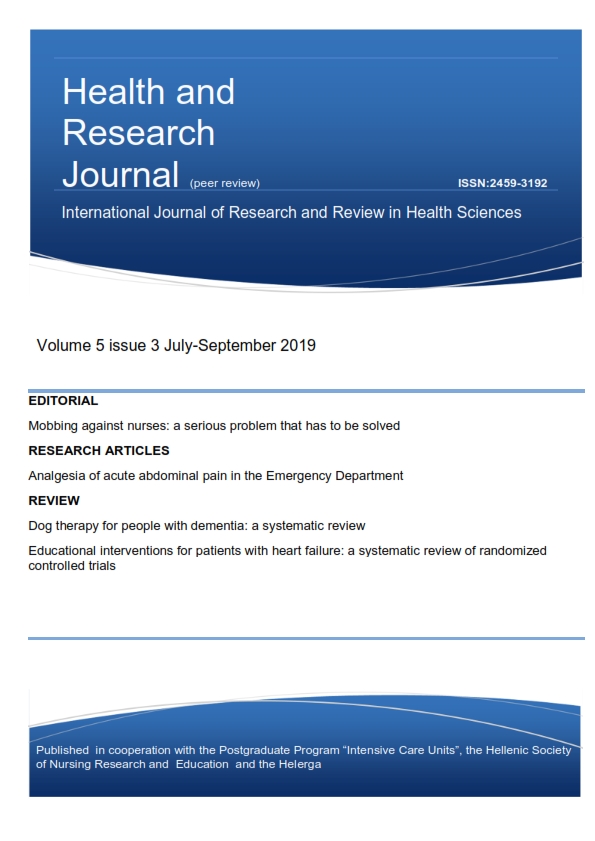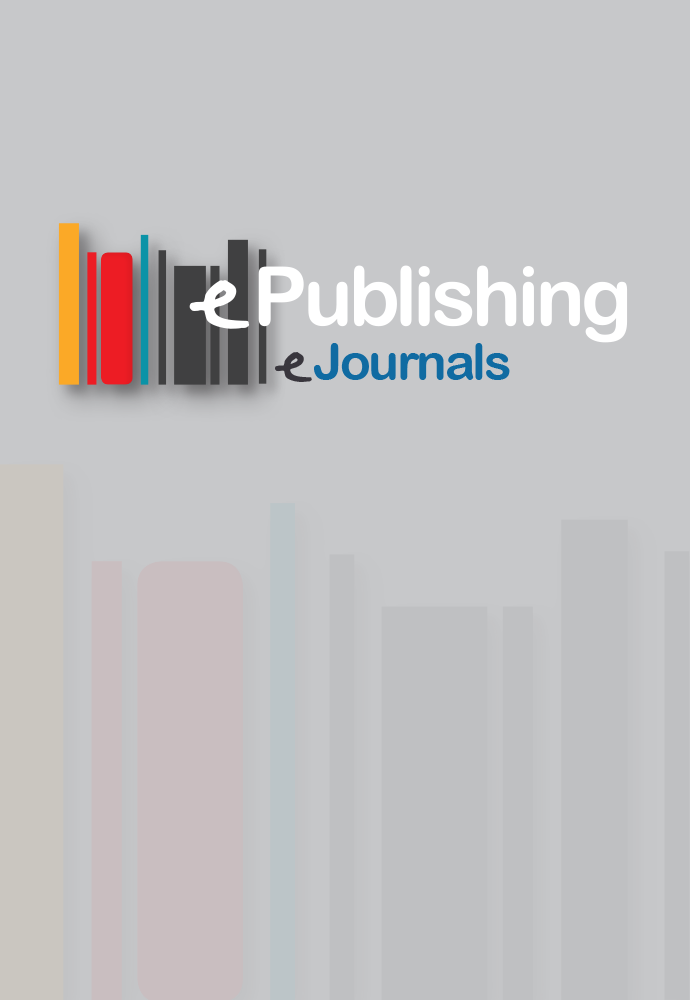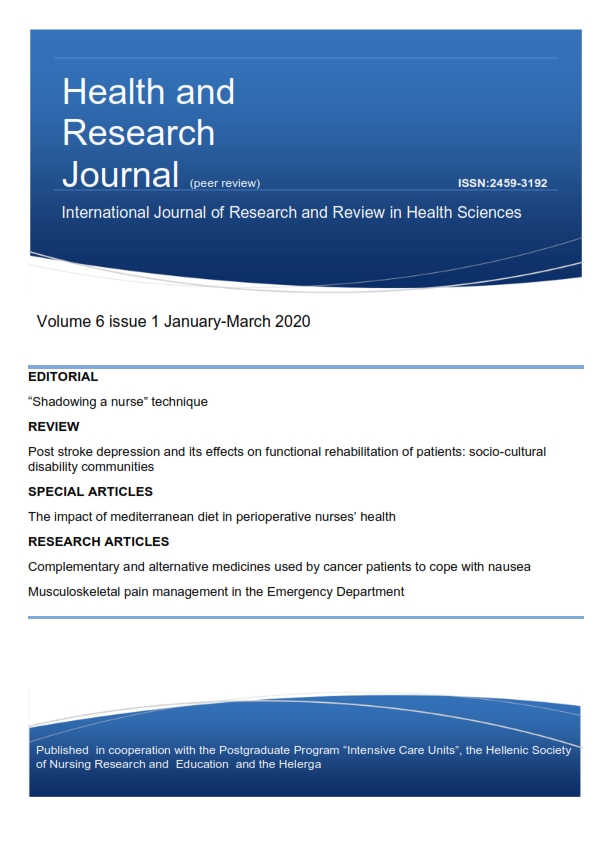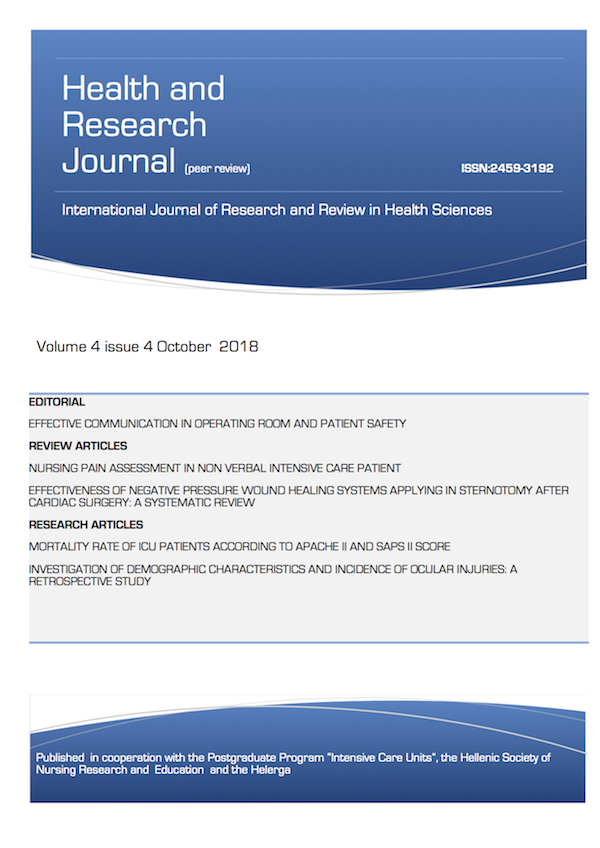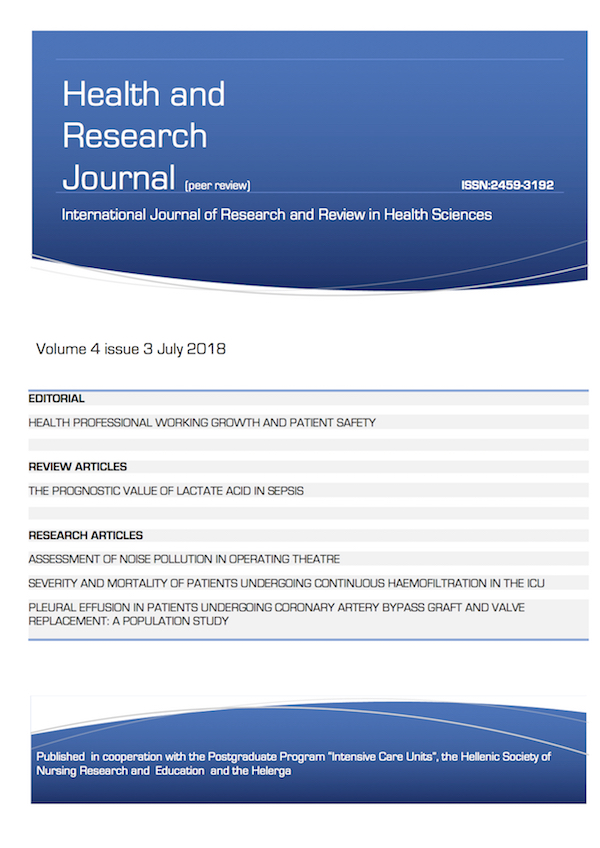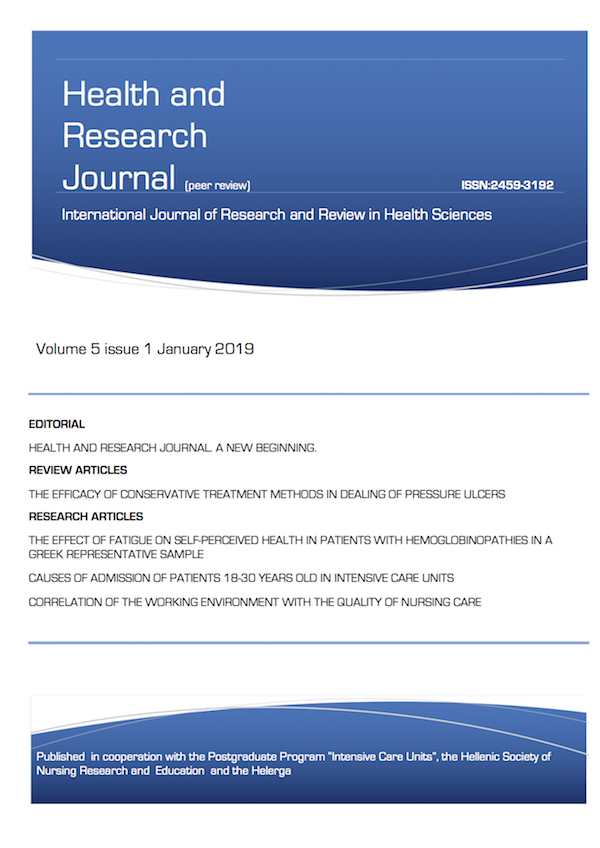Survival rate of incoming patients with cardiac arrest at the cardiology infirmary of the emergency department of a public hospital in Greece
Abstract
Introduction: Cardiac arrest is an urgent situation that, despite the improved resuscitation capabilities, the survival rate of out-of-hospital cardiac arrest victims remains low.
Aim: Τo investigate the survival rate of the incoming patients with cardiac arrest in the cardiology infirmary of the emergency department of a public hospital.
Material-Method: The study included 210 patients who were transferred pulseless and breathless at the cardiology infirmary of the emergency department of “Tzaneio” Hospital, Piraeus, during the period April 2017 - November 2018. Data was collected from the National Center of Emergency Dispatch's printed forms, as well as from the patients’ admission book of the emergency department.
Results: More than 10% (11.9%) of patients with cardiac arrest returned to spontaneous circulation in the emergency department, of which 16% was discharged. Patients with known cardiac history, (p=0.002), with a shockable rhythm (p<0.001), and especially ventricular fibrillation (p<0.001) upon arrival at the emergency room, and patients who were defibrillated at the ambulance during admission and at the emergency room, were more likely to survive (p<0.001). No statistically significant correlation was found between the factors studied and survival after cardiac arrest, in the group of patients that were discharged.
Conclusions: The survival rate of the incoming patients with cardiac arrest at the emergency department of “Tzaneio” Hospital, Piraeus, was low. As for most health systems, this issue constitutes a fairly complex public health problem. Cardiopulmonary resuscitation and corresponding guidelines require further improvement in order for the survival rates of out-of-hospital cardiac arrest patients to increase.
Article Details
- How to Cite
-
Papadopoulou, S., Konstantakopoulou, O., Kalogianni, A., Kelesi-Stavropoulou, M., & Kapadohos, T. (2019). Survival rate of incoming patients with cardiac arrest at the cardiology infirmary of the emergency department of a public hospital in Greece. Health & Research Journal, 5(2), 53–65. https://doi.org/10.12681/healthresj.20871
- Section
- Original Articles
Copyright notice:
The journal "Health and Research Journal" reserves the rights for copyright of the content of the website and also the copyright of the articles published.
By virtue of their appearance in this journal, the articles are free to be used for non-commercial purposes. However, the articles cannot and must not be used in anyway, published elsewhere or modified without any reference to the author and the first publication of the article.




